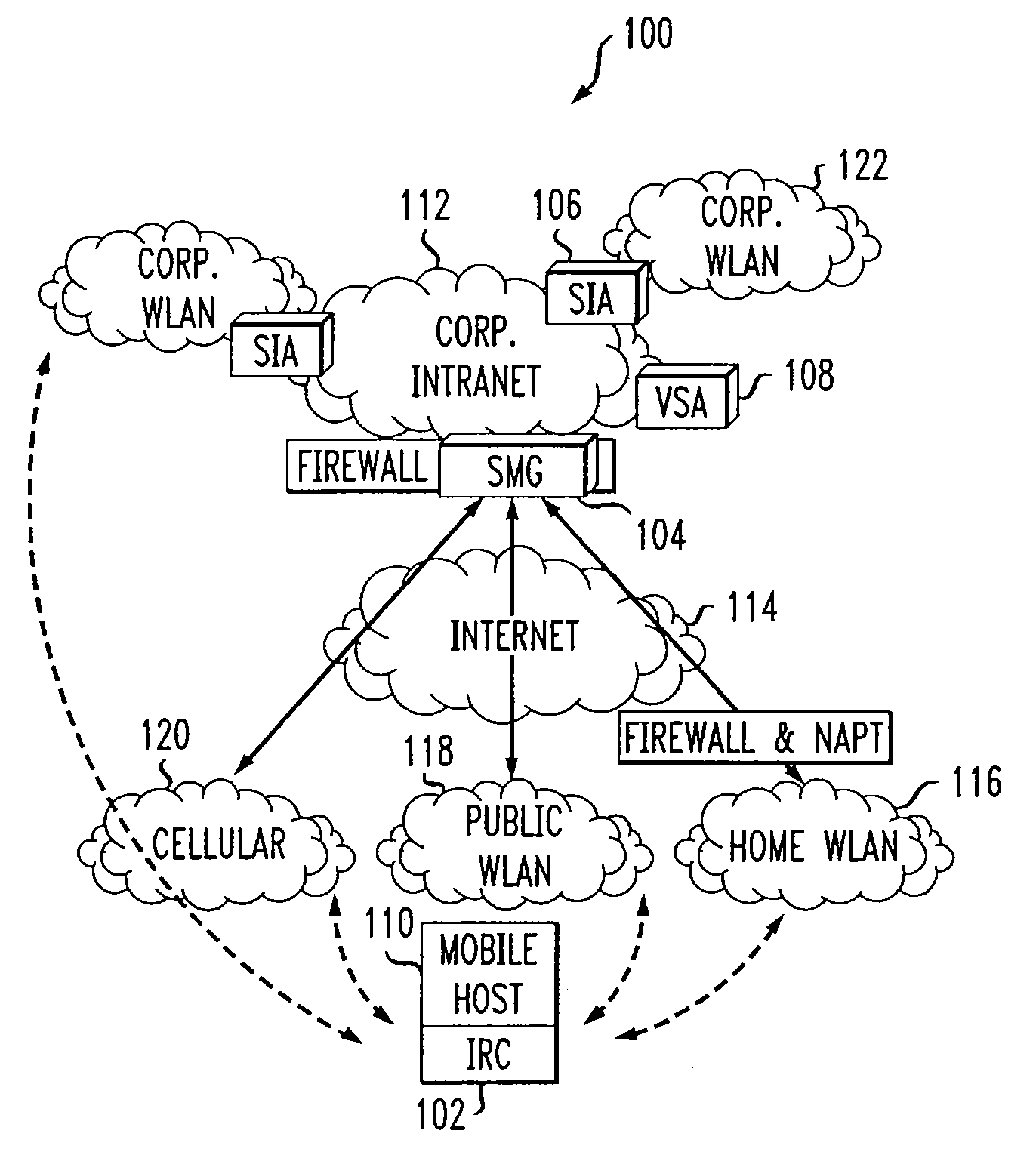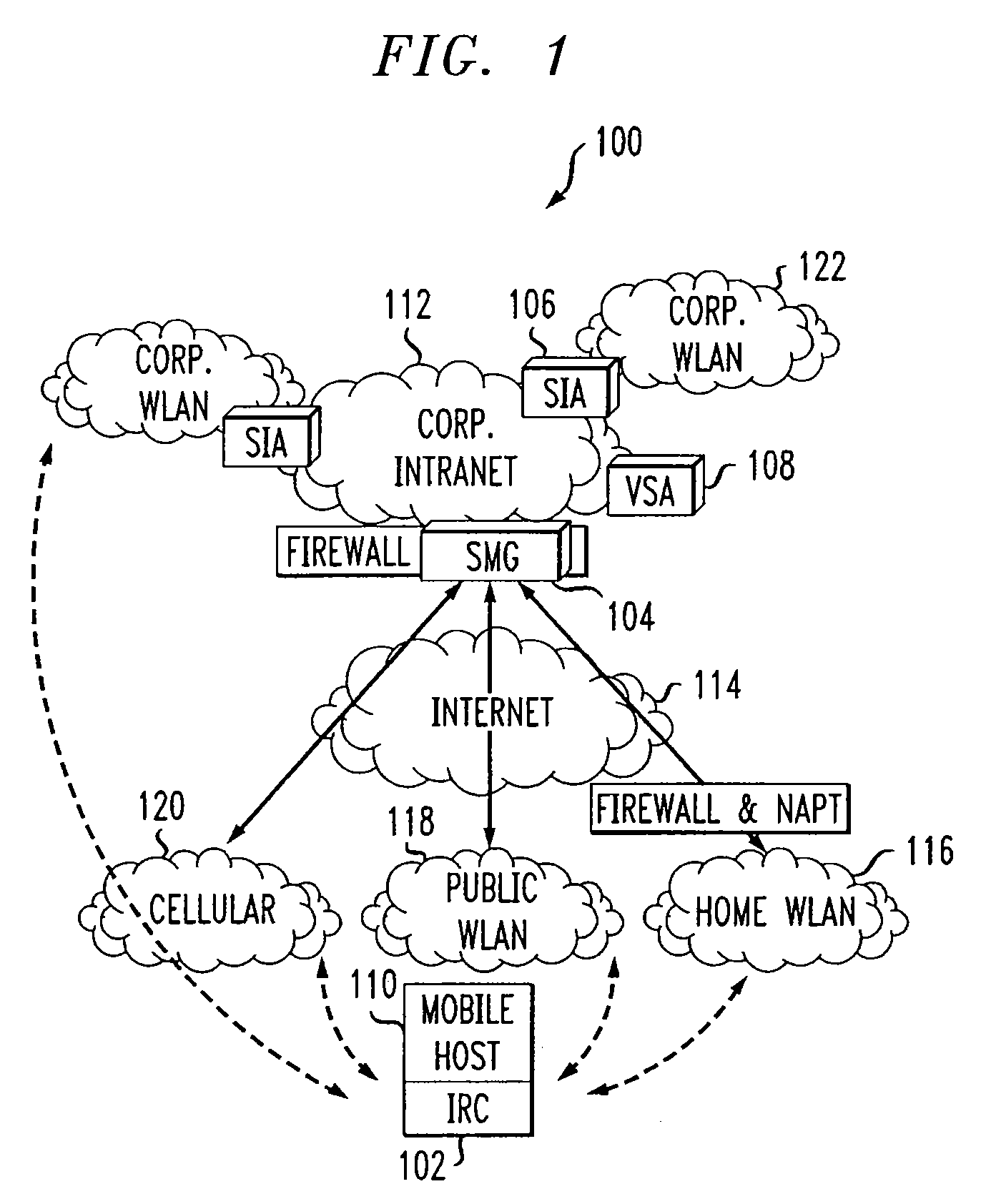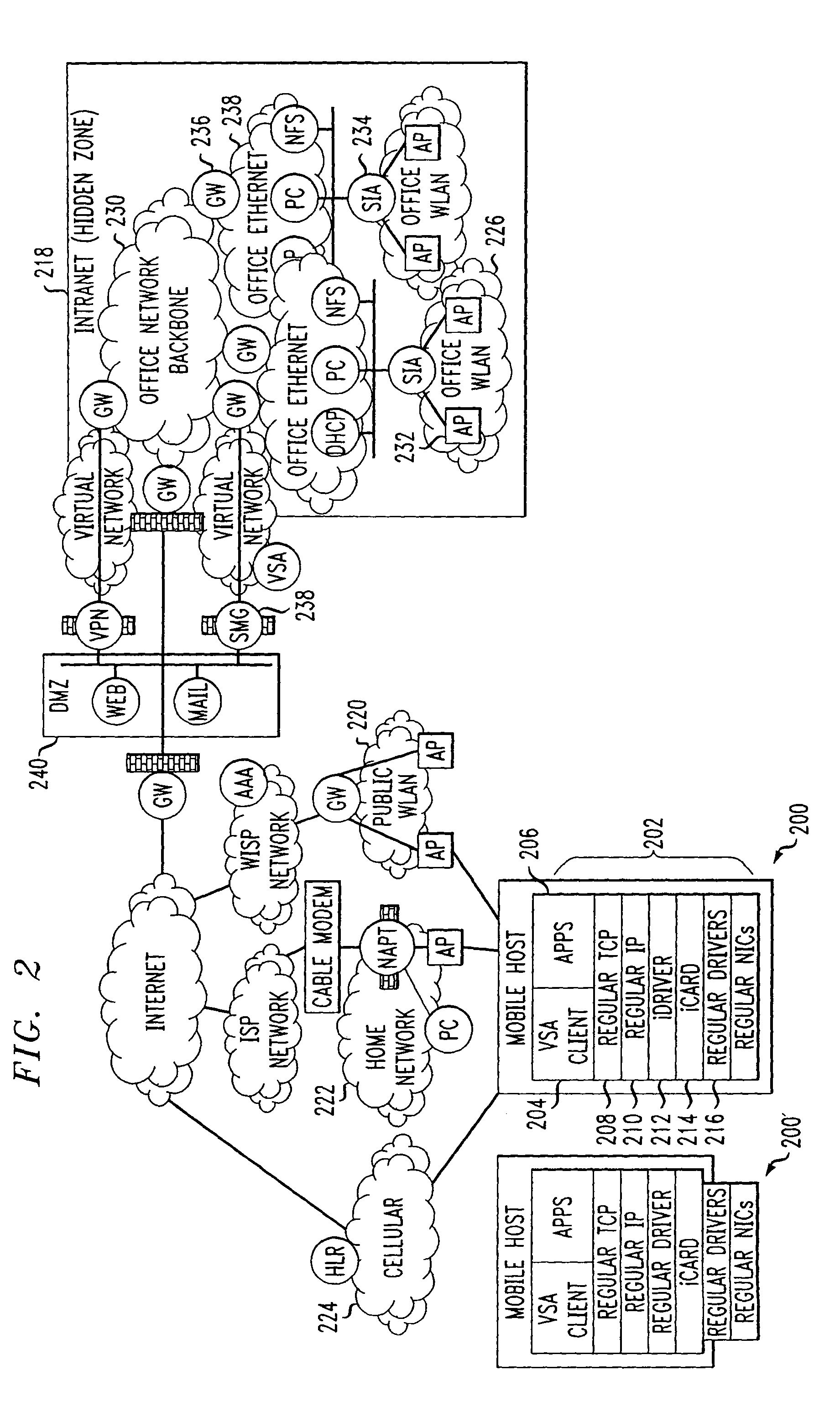System and method to support networking functions for mobile hosts that access multiple networks
a mobile host and network technology, applied in the field of mobile networking, can solve the problems of small coverage area, unsatisfactory data users, and the possibility that operators will allocate all the available bandwidth to serve data users
- Summary
- Abstract
- Description
- Claims
- Application Information
AI Technical Summary
Benefits of technology
Problems solved by technology
Method used
Image
Examples
Embodiment Construction
[0020]FIG. 1 is a schematic overview of a high-level Internet Roaming system architecture 100. The exemplary embodiment comprises the following components: Internet roaming clients (IRCs) 102, a secure mobility gateway (SMG) 104, optional secure IP access (SIA) gateways 106, and a virtual single account (VSA) server 108. The IRC 102 is a special client tool installed on a corporate user's portable computer (network access device or mobile host) 110 equipped with a WLAN adaptor and a cellular modem. The IRC 102 presents a single sign-on interface for the user to initiate a simple, secure mobile networking experience. After the user submits the authentication credential, the IRC 102 is responsible for establishing and maintaining a mobile IPsec tunnel between the mobile host and a corporate intranet 112 through the best wireless network available to the user. The SMG 104 is a mobile IPsec gateway installed between the corporate network 112 and the Internet 114. The SMG 104 operates in...
PUM
 Login to View More
Login to View More Abstract
Description
Claims
Application Information
 Login to View More
Login to View More - R&D
- Intellectual Property
- Life Sciences
- Materials
- Tech Scout
- Unparalleled Data Quality
- Higher Quality Content
- 60% Fewer Hallucinations
Browse by: Latest US Patents, China's latest patents, Technical Efficacy Thesaurus, Application Domain, Technology Topic, Popular Technical Reports.
© 2025 PatSnap. All rights reserved.Legal|Privacy policy|Modern Slavery Act Transparency Statement|Sitemap|About US| Contact US: help@patsnap.com



